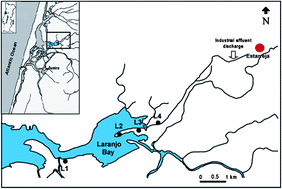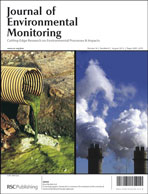Mercury uptake and allocation in Juncus maritimus: implications for phytoremediation and restoration of a mercury contaminated salt marsh
Abstract
Juncus maritimus is the most abundant macrophyte in Laranjo bay, a Portuguese salt marsh heavily polluted by mercury (Hg). With the aim to elucidate the role of this species in the salt marsh Hg cycling and restoration, plants were harvested between March 2006 and January 2008 from four locations differing in Hg contamination. Metal uptake and distribution between plant organs were evaluated, biomass and Hg pools were also determined. Results showed that J. maritimus may influence the sediment pH and Eh, thus increasing the Hg available for uptake. Most (95–98%) of the absorbed Hg was retained belowground, phytostabilizing the metal and reducing the amount of Hg in the sediments. These results suggest that in salt marshes dominated by J. maritimus the approach could be phytostabilization, where these plants can be used to immobilize metals and store them belowground, reducing the pool of bioavailable Hg within contaminated marshes and acting as a sink rather than a source of contamination to the surrounding areas.


 Please wait while we load your content...
Please wait while we load your content...